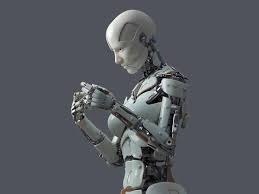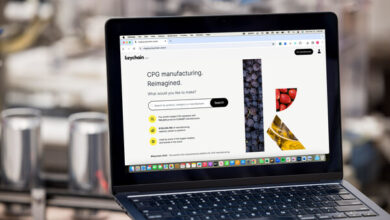The Rise of Humanoid Robots: From Uncanny Valleys to Multisensory Integration

The evolution of humanoid robots has been nothing short of fascinating, with these machines progressing from mere prototypes to real-world applications across multiple industries. However, one persistent challenge is the “uncanny valley” effect, a concept introduced over 50 years ago by roboticist Masahiro Mori. This theory suggests that as robots become more lifelike, human comfort diminishes before eventually rising again once the robots become indistinguishable from humans. Despite this, the increasing use of humanoid robots in sectors such as logistics, manufacturing, healthcare, and hospitality shows that their utility may soon outweigh any initial discomfort.
The Humanoid Robot Market: Rapid Growth and Potential
Although still in its infancy, the humanoid robot market is on the cusp of massive growth. In 2023, the market was valued at $1.8 billion, but projections suggest it will exceed $13 billion within the next five years. This growth is driven by advancements in artificial intelligence (AI) and the development of more human-like features in robots. Tesla’s entry into the market with the Tesla Optimus Gen 2 has garnered significant attention. Optimus is designed to perform dangerous, repetitive, and mundane tasks, and according to Elon Musk, the humanoid robot division’s potential market value could even surpass that of Tesla’s electric vehicles.
Current Applications Across Industries
Humanoid robots are already being deployed in various industries, though their full potential has yet to be realized. Here are some of the key sectors where humanoid robots are making an impact:
- Hospitality: In Spain, humanoid robots like Kime serve customers at self-contained kiosks, pouring drinks and snacks. In hotels, robots are employed as concierges, greeting guests and handling basic customer service tasks.
- Education: Humanoid robots such as Nao and Pepper assist in educational settings, helping students learn programming, robotics, and other technical skills. They offer personalized learning experiences that can be tailored to the needs of individual students.
- Healthcare: In healthcare, humanoid robots are proving useful in monitoring patients’ vital signs, assisting in surgeries, and even providing companionship to the elderly. These robots can help alleviate the pressures of labor shortages in healthcare, especially in regions with aging populations.
The rise in demand for humanoid robots will likely continue to grow as industries realize the benefits of automating labor-intensive and repetitive tasks. As companies begin to buy humanoid robots for more complex roles, it’s clear that these machines are becoming valuable assets.
Challenges and Pilot Programs
Despite their growing popularity, humanoid robots still face challenges in their deployment. One significant hurdle is the need for pilot programs to test robots in real-world environments such as factory floors and warehouses. These trials aim to address issues like safety, collaboration, and societal acceptance.
The “uncanny valley” effect still causes discomfort for some individuals when interacting with humanoid robots, but pilot programs are helping to mitigate these concerns. Incremental deployment and transparency will be crucial in ensuring these robots are welcomed into society without fear.
The Multisensory Future of Humanoid Robots
One of the most exciting advancements in the development of humanoid robots is the integration of multisensory capabilities. Researchers at Penn State have recently developed the first artificial, multisensory integrated neuron that allows robots to process and react to their environment in real-time. By integrating touch and visual sensors, robots can now make more informed decisions based on their surroundings.
For example, this technology enabled a robot to navigate a dark room using only a brief flash of light—showing the incredible potential of multisensory integration in advancing robotics. The future goal is to equip humanoid robots with sensors that correspond to multiple human senses, including sight, touch, hearing, and even smell. This will allow robots to perform tasks in more dynamic and complex environments.
Tesla Optimus Gen 2: A Pioneer in the Next Wave of Robotics
One of the most advanced humanoid robots making headlines today is the Tesla Optimus Gen 2. Designed to take on repetitive, dangerous, and tedious tasks, Optimus is equipped with AI and sensor technologies that allow it to perform tasks autonomously. Its advanced capabilities, coupled with Tesla’s full self-driving software, make it one of the most promising players in the humanoid robot industry.
Optimus has been designed to navigate a variety of environments, from industrial floors to everyday household settings. As Tesla continues to refine its robotics division, Optimus is set to disrupt multiple industries, potentially creating a massive shift in how we view and use labor.
Addressing Societal Concerns
Despite the numerous benefits of humanoid robots, concerns about their role in society remain prevalent. Many people worry about job displacement, privacy issues, and the overall human-robot interaction experience. These concerns are valid and must be addressed through clear communication and collaboration between businesses, developers, and the general public.
The key to integrating humanoid robots successfully is to focus on how these machines can enhance, rather than replace, human labor. Robots can handle the more dangerous, repetitive, or physically demanding tasks, leaving humans to engage in higher-level problem-solving, creative thinking, and emotional intelligence—areas where robots still have limitations.
Conclusion: From Uncanny Valleys to Full Integration
The journey of humanoid robots from the uncanny valley to full integration into society is still ongoing, but the advancements made in recent years are undeniable. As AI capabilities improve and multisensory integration becomes more sophisticated, humanoid robots like the Tesla Optimus Gen 2 will become indispensable across various industries.
With a projected market growth that shows no signs of slowing down, and real-world applications already making waves, the future of humanoid robots is bright. Whether it’s revolutionizing healthcare, education, or industrial automation, these robots are set to change the landscape of human-robot interaction.
As with all disruptive technologies, the key will be addressing societal concerns and ensuring that robots work alongside humans to create a more efficient, safe, and dynamic world. Humanoid robots are no longer confined to the pages of science fiction—they are here to stay, and their future is unfolding right before our eyes.



